General Info – summary
This evergreen endemic Tree is up to 6m high with light brown bark becoming dark. Smallish Leaves are deeply bilobed with roughly semi-circular lobes. The attractive white, bisexual, slightly zygomorphic, large, 5-merous Flowers have attached spathes. 5 white filaments + golden anthers. The superior ovary has 1 style & a green swollen stigma. Fruit: a long narrow dehiscent pod with round flattened 1cm wide seeds.
Description
Bauhinia bowkeri
Previous Names: Locellaria bowkeri, Pauletia bowkeri.
SA Tree No. 208.4.
Common names: (Afr) Kei-beesklou, Keibauhinia. (Eng) Bowker’s Bauhinia, Kei Bauhinia, Kei Neat’s Foot, Kei White Bauhinia. (isiXhosa) Umdlandlovu. (isiZulu) Umdlandlovu. Kei-beesklou (refers to the leaves, which appear to resemble animal footprints). Kei refers to the region on either side of the Kei River mouth area in the Eastern Cape.
Family: Fabaceae, or Leguminosae (Pea, bean or legume family). After the Orchidaceae and the Asteraceae, the Fabaceae is the third largest Angiosperm (flowering plants) family with 700+ genera and close to 20 000 species. Local Tree genera on this website include Acacia (Vauchellia, Senegalia), Albizia, Bauhinia, Bolusanthus, Burkea, Calpurnia, Colophospermum, Cordyla, Cyclopia, Dichrostachys, Erythrina, Erythrophleum, Faidherbia, Indigofera, Mundulea, Peltophorum, Philenoptera, Piliostigma, Schotia and Xanthocercis. The Fabaceae are recognisable by their fruit and their pinnately compound Leaves. Leaves may also be simple – even bilobed and usually have stipules – some of which may be spinescent. Leaflets are usually entire. Flowers are bisexual and bracteate. Regular flowers usually have 4-5 sepals and the same number of petals. Irregular flowers have 4-5 sepals and 5 or less petals. Stamens have anthers that have 2 pollen sacs and there are usually at least twice the number of stamens as petals – often 10. The superior Ovary has 1 locule containing 1 or more ovules. The Stigma and Style are simple. The single carpel develops into the Fruit, which is usually a pod. The mature pods may dehisce or break into segments. Seeds vary.
Name derivation: Bauhinia – named after two brothers, Caspar and Jean Bauhin – Swiss botanists in the 16th century. Caspar sorted out the massive confusion of plant description at the time. Caspars factual accounts of flowers, stems, leaves, and roots would aid in classification in years to come. The twin lobed leaves aid the identification of genus Bauhinia. bowkeri – after Colonel James H. Bowker (1822-1900) a naturalist and civil servant of the Cape government. He collected the first specimen on the Mbashe (Bashee) River – about halfway up the coast between East London and Kwazulu-Natal.
Name derivation: Bauhinia – named after two brothers, Caspar and Jean Bauhin – Swiss botanists in the 16th century. Caspar sorted out the massive confusion of plant description at the time. Caspars factual accounts of flowers, stems, leaves, and roots would aid in classification in years to come. The twin lobed leaves aid the identification of genus Bauhinia. bowkeri – after Colonel James Henry Bowker (1822-1900) a soldier and noted naturalist. He was a civil servant of the Cape government and collected the first specimen on the Mbashe (Bashee) River – about halfway up the coast between East London and Kwazulu-Natal.
Conservation: National Status: N T. Near Threatened. Assessed: 2022/02/28. (J.E. Victor and A.E. van Wyk). This plant is potentially threatened by subsistence agriculture. For now, the population trend is stable. There are up to 20 possible species of Bauhinia in South Africa.
Tree
This much-branched small Tree (photo 736) may reach 6m high but it is usually a scrambling shrub. The Bark on young branches is light brown and ages to a grey brown (photo 735). Young branches have conspicuous Lenticels (a usually raised corky oval or elongated area on the plant that allows the uncontrolled interchange of gases with the environment – photo 1 024).
- 736 2014/09/16 Lowveld NBG. Photo: David Becking.
- 735M 2014/09/16 Lowveld NBG. Photo: David Becking.
- 1024 2016/10/18 Pretoria NBG. Photo: David Becking.
Leaves
The alternately arranged and conspicuously bilobed Leaves are butterfly like and relatively small – up to 4cm long and 5cm wide (usually less). They are usually smooth, hairy and slightly lighter below (photo 1027). The semi-circular lobes are divided to about two-thirds the distance to the base – much more divided than leaves in Bauhinia galpinii. There are 4 veins arising at the base of each lobe (photo 1 027). Here the lowest one is just visible. The slender Petiole (leaf stalks) is up to 1,5cm long. Stipules (basal appendages of the petiole) are caduceus (easily detached and shed early). Leaves are similar in appearance to those of Colophospermum mopane but here there is a central reduced third central leaflet. In Bauhinia bowkeri the single leaf is bilobed and there is no reduction to a tiny leaflet.
- 1027 2016/10/18 Pretoria NBG. Photo: David Becking. NBG
Flowers
The large, sweetly scented, bisexual Flowers are pendulous or in small bunches. These bunches have up to six flowers that occur terminally or along the branches (photo 736 under Tree). Flowers are slightly zygomorphic (irregular flower: when corolla is divisible into 2 equal halves in one plane only). The base of the flower has an attached Spathe (one or more bracts enclosing a flower or inflorescence – photo 1 021). Here the outer surface is reddish, and the inner surface is initially green. The spathe is split to the base on 1 side only – photo 1 021). The brown Calyx covers the long slender buds (photo 1 021). The toothed lobes overlap in the bud (photo 1 021). The 2 upper lobes are connate (united or joined) high up. The 5 impressive, white, not quite equal Petals are slightly crinkly (photo 1 020). The 10 free Stamens are in 2 whorls. Their white, variable Filaments (the slender stalks that supports the anther)s are up to 3cm long and curve upwards towards the almost vertical Anthers. The initially golden coloured anthers (photo 1 020) dehisce through longitudinal slits and age to a brown colour (photo 1 021). There is a single Pistil (a unit of the Gynoecium, the female element of the flower, composed of the Ovary, Style and Stigma). The stalked Ovary is superior (one that is free from the calyx or perianth). The long white Style extends below and beyond the stamens (photo 1 021) ending in a single greenish swollen Stigma (the part of the pistil that receives the pollen – photos 1 020 and 1 021). (Oct-Mar).
- 1020 2016/10/18 Pretoria NBG. Photo: David Becking.
- 1021 2016/10./18 Pretoria NBG. Photo: David Becking.
Fruit
Each of the many, long, narrow (up to 14 x 2cm) Fruit is a slender, flat, dehiscent, woody Pod (a dry, dehiscent fruit). The external of the temporally persistent, brownish calyx becomes streaked with a greenish-cream colour. It eventually dries and shrivels up. As it dehisces along its entire length, the initially straight, woody pod becomes twisted. After shedding the Seeds, the now open pod may remain on the plant for many months. The compressed, circular Seeds are about 1cm wide. (Dec-Apr).
Distribution & Ecology
This impressive drought tolerant plant is Endemic in South Africa. (Endemism is the ecological state of a species being unique to a defined geographic location). It is found in a restricted area of the Eastern Cape and southern KwaZulu-Natal. These plants grow in the coastal belt and valley bushveld below 750m altitude. They usually occur close to riverbanks and relatively close to the sea. Here the rainfall varies between 800 and 1 250mm per year.
Ethnobotany
These plants grow best in warm, well-drained areas, where frost is relatively mild. The tree handles pruning well. This is an attractive garden prospect. Although trees are naturally found near the coast, planted trees also do well near Pretoria as well as at the Lowveld National Botanical Gardens (photos 1021 & 736).
References
Boon, R. 2010. Pooley’s Trees of eastern South Africa. Flora and Fauna Publications Trust, Durban.
Coates Palgrave, M. 2002. Keith Coates Palgrave Trees of Southern Africa, edn 3. Struik, Cape Town.
Lawrence, G. H. M, 1951. Taxonomy of Vascular Plants. The Macmillan Company, New York. Tenth Printing 1965.
Palmer, E. & Pitman, N. 1972. Trees of southern Africa. Balkema, Amsterdam, Cape Town.
van Wyk, B. & van Wyk, P. 1997 Field guide to Trees of Southern Africa. Struik, Cape Town.
Victor, J.E. & van Wyk, A.E. 2022. Bauhinia bowkeri Harv. National Assessment: Red List of South African Plants version . Accessed on 2024/11/11.
http://pza.sanbi.org/bauhinia-bowkeri
https://toptropicals.com/catalog/uid/bauhinia_bowkeri.htm

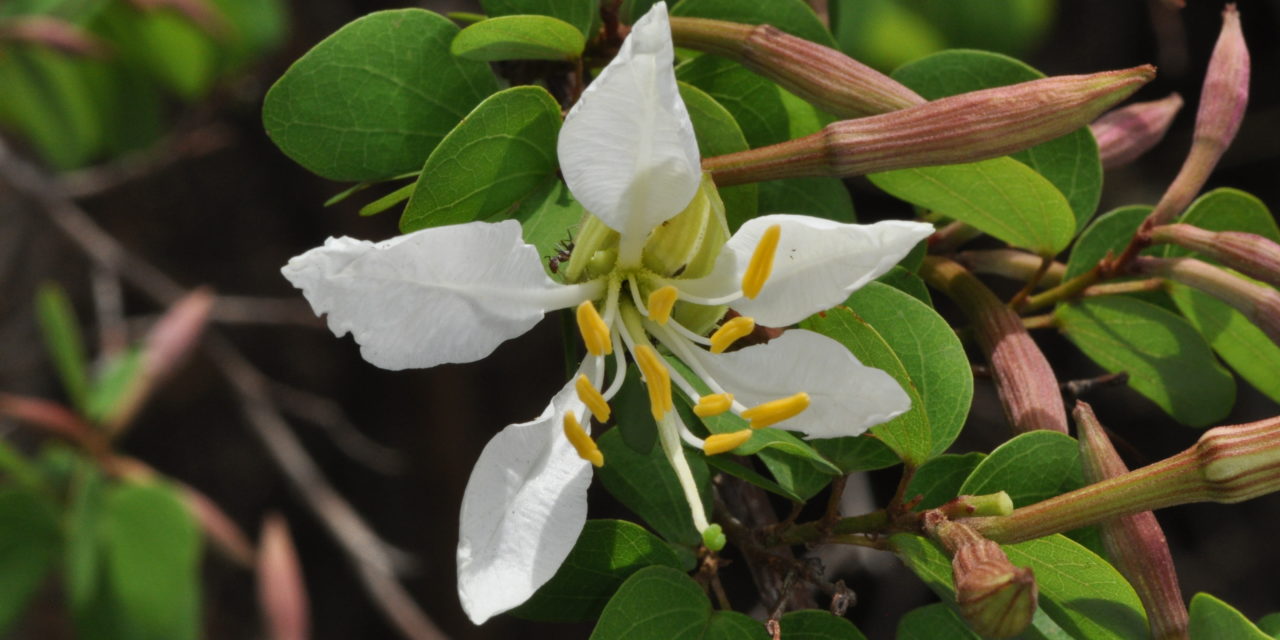
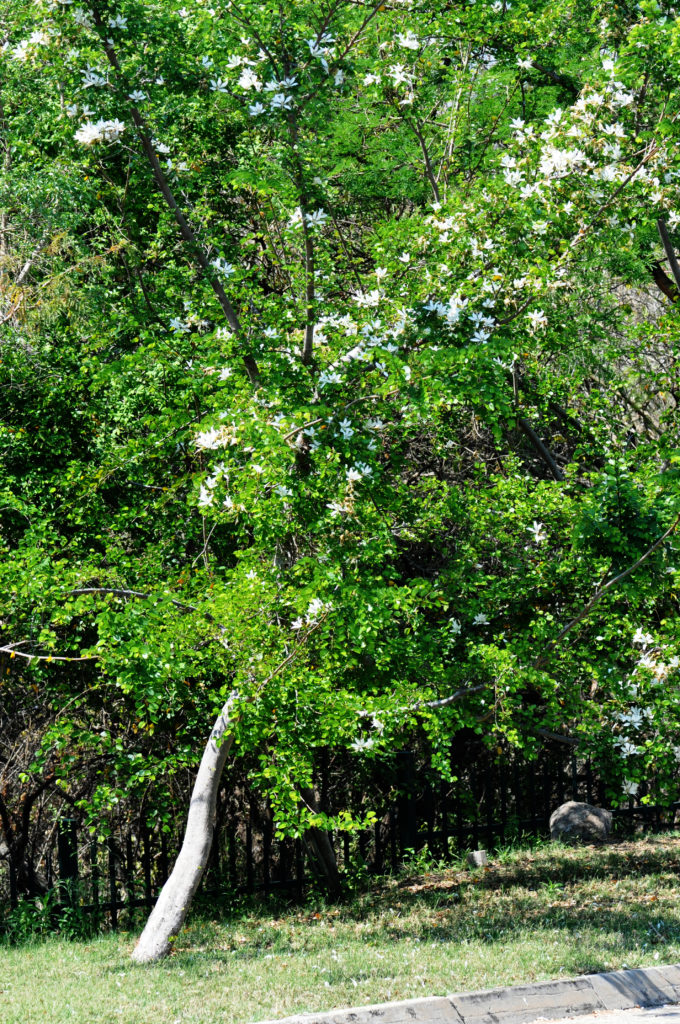
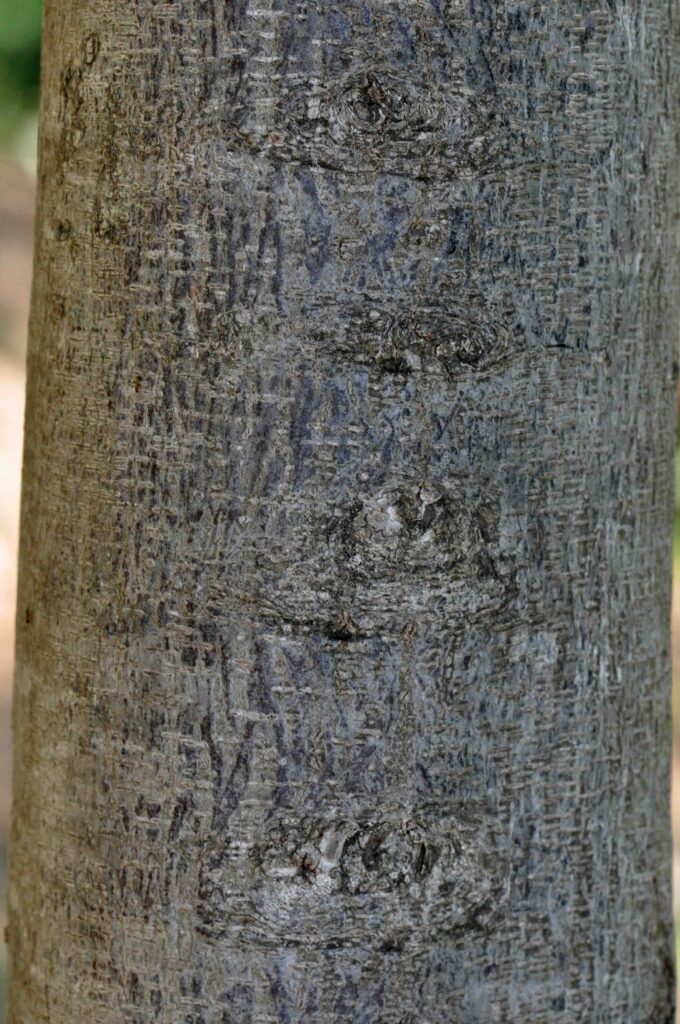
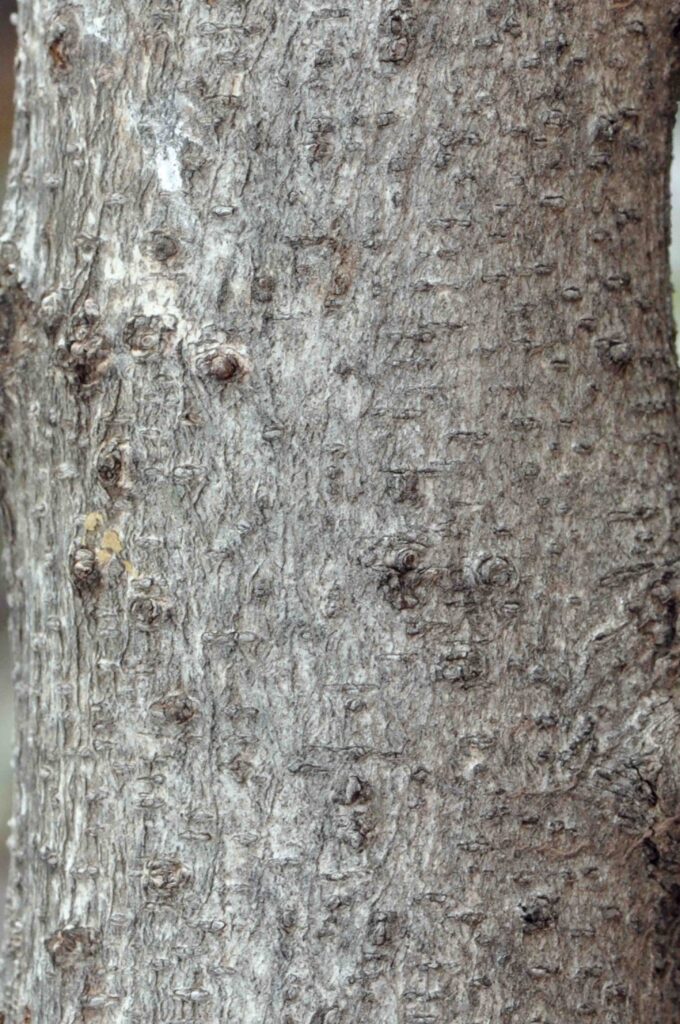
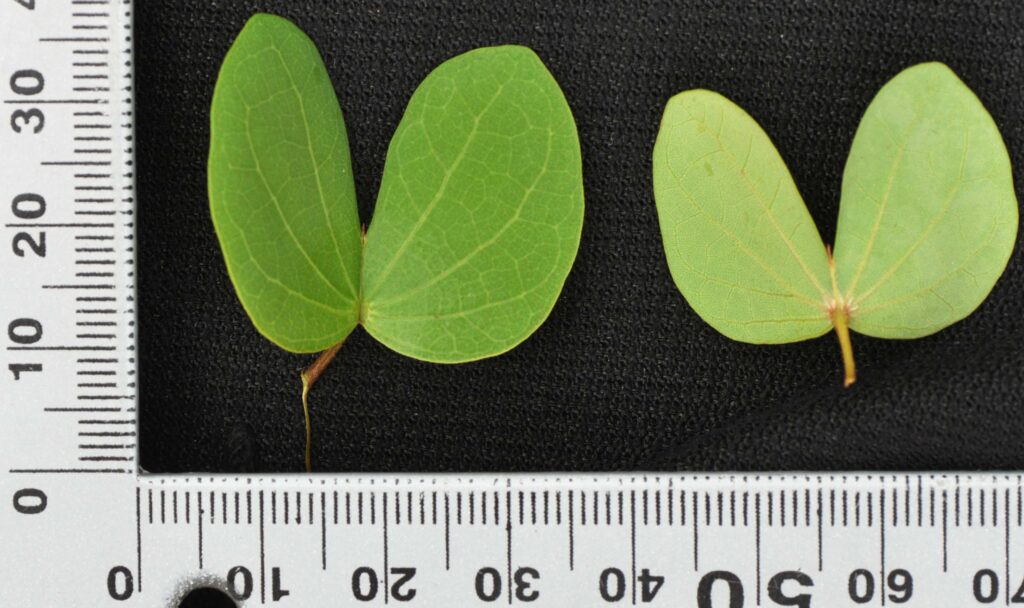
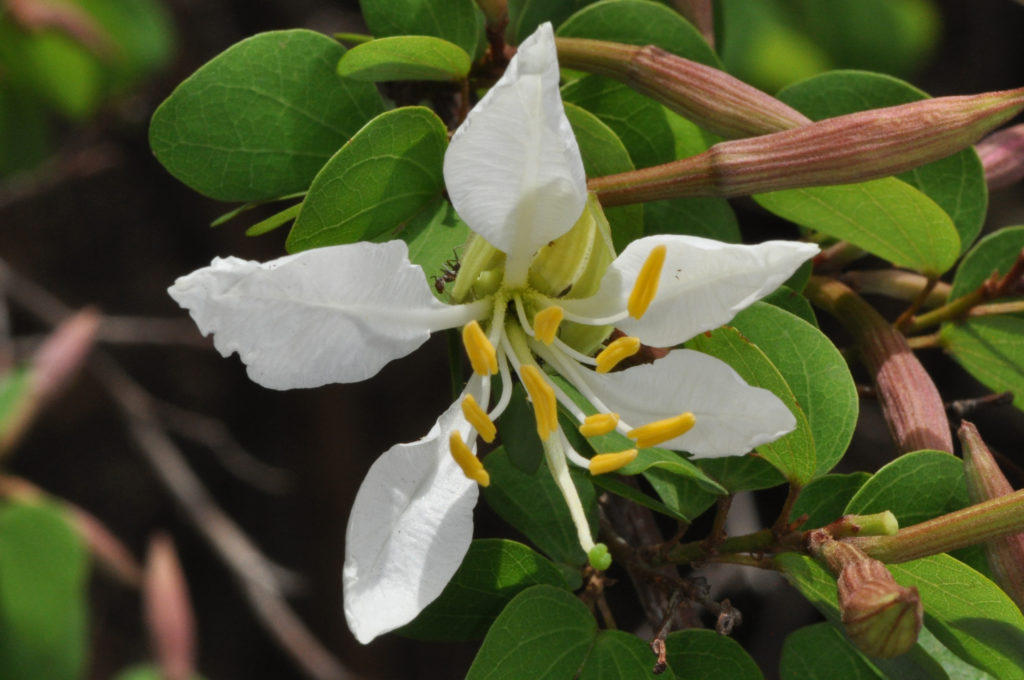
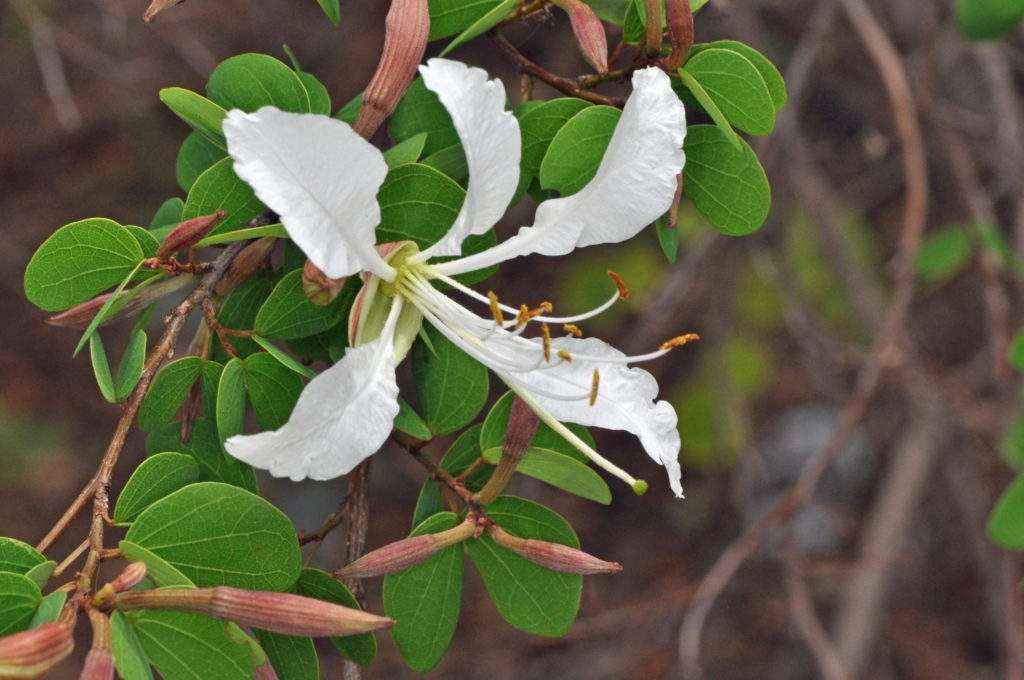
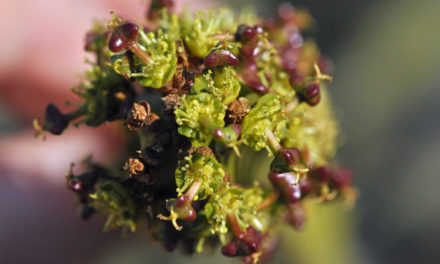
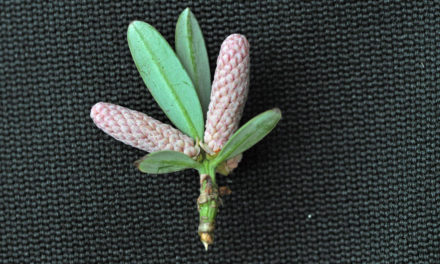
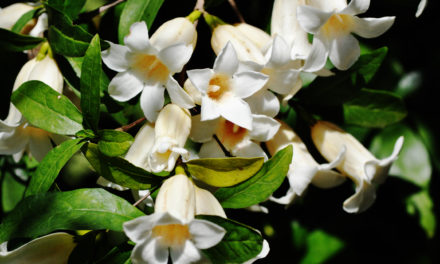
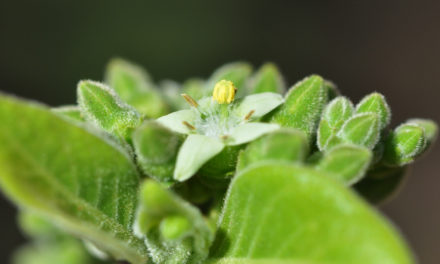
Hi
Where could I get hold of a bauhinia bowkeri?
I would be SO grateful if you could help.
Michelle Keen
0835254876
Jamestown
Stellenbosch
Greetings Michelle
Try your local nursery – they may have or can order for you. I have seen them at 2 botanical gardens (Pretoria and Lowveld). They may be able to help. Kirsten Botanical Gardens is another possible venue for some help. Another impressive close relative is Bauhinia galpinii – possibly easier to find.
Good luck and take care.
David Becking.